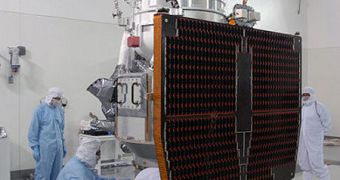The collaboration of experts handling the scientific return of the NASA Wide-field Infrared Survey Explorer (WISE) mission released a mix containing images of 9 galaxies today. The release heralds the publishing of the full WISE galactic catalog.
During its stay in Earth's orbit, the spacecraft conducted one and a half full sky surveys, and managed to image all of the 1,000+ large galaxies that surround our solar system from all sides.
With the new data release, experts just wanted to attract people's attention to WISE's imaging capabilities. Soon, they say, all the galactic datasets the telescope accumulated will be made available to the public.
“Galaxies come in all sorts of delicious flavors. Our first sample shows what WISE is capable of. We can produce spectacular high-resolution images of the largest galaxies,” says Tom Jarrett.
The expert, who is a member of the WISE science team, holds an appointment with the California Institute of Technology (Caltech) Infrared Processing and Analysis Center (IPAC), in pasadena.
The release includes images of grand design spiral galaxies, which feature massive swirling arms, as well as flocculent galaxies, which are patchy in appearance, but very interesting to study from a galactic evolution perspective.
WISE was able to used its four infrared band detectors to image structures contained within these large galaxies, such as for example their central bulges, or their majestic arms and halo disks.
“We can learn about a galaxy’s stars – where are they forming and how fast? There’s so much diversity in galaxies to explore,” Jarrett goes on to say. Cataloging all known galaxies is something that astronomers have been working on for decades.
However, the sheer number of such structures is overwhelming. Add to this the fact that telescopes continue detecting new ones every year, and you get the recipe for a long-term research.
At the same time, a parallel effort is conducted to understand how these galaxies formed, and what the Universe looked like when it was only a fraction of its current age. Understanding how the earliest stars came together in galaxies is also a major objective.
But conducting such studies requires massive amounts of data, and instruments such as WISE were used for this exact purpose, Space Fellowship reports.

 14 DAY TRIAL //
14 DAY TRIAL //